Chinmoy Kundu
Location Privacy-Enabled Beamforming in ISAC Scenarios
Aug 13, 2025Abstract:Integrated sensing and communication (ISAC) technology enables simultaneous environmental perception and data transmission in wireless networks; however, it also exposes user location to receivers. In this paper, we introduce a novel beamforming framework guided by the proposed privacy metric direction of arrival obfuscation ratio (DAOR) to protect transmitter location privacy in ISAC scenarios. Unlike previous approaches, we do not suppress the line-of-sight (LOS) component while reshaping the angular power distribution so that a false direction appears dominant at the receiver. We derive closed-form bounds on the feasible DAOR via generalized eigenvalue analysis and formulate an achievable rate-maximization problem under the DAOR constraint. The resulting problem is non-convex, which is efficiently solved using semidefinite relaxation, eigenmode selection, and optimal power allocation. A suboptimal design strategy is also proposed with reduced complexity. Numerical results demonstrate that the proposed DAOR-based beamformer achieves a trade-off between location privacy and communication rate without nullifying the LOS path. Results also show that a suboptimal design achieves a near-optimal communication rate with nearly an 85% reduction in computation time at a signal-to-noise ratio (SNR) of 10 dB.
Secrecy Performance of a Keyhole-based Multi-user System with Multiple Eavesdroppers
Apr 03, 2025Abstract:This paper investigates the secrecy performance of a keyhole-aided multi-user communication network in the presence of multiple eavesdroppers. The communication happens through the same keyhole for legitimate users and eavesdroppers. In this context, the secrecy performance is evaluated for a user scheduling technique by obtaining the exact closed-form expression of secrecy outage probability (SOP). Further, a simplified asymptotic SOP expression is derived assuming high signal-to-noise ratio (SNR) scenario for a better understanding of the impact of system parameters. The effect of the keyhole parameters, number of users, number of eavesdroppers, and threshold secrecy rate on the SOP performance are also investigated for the considered system model. In the high-SNR regime, the asymptotic SOP saturates to a constant value and does not depend on the keyhole parameter and the channel parameter of the source-to-keyhole channel.
Joint Transmit and Jamming Power Optimization for Secrecy in Energy Harvesting Networks: A Reinforcement Learning Approach
Jul 24, 2024



Abstract:In this paper, we address the problem of joint allocation of transmit and jamming power at the source and destination, respectively, to enhance the long-term cumulative secrecy performance of an energy-harvesting wireless communication system until it stops functioning in the presence of an eavesdropper. The source and destination have energy-harvesting devices with limited battery capacities. The destination also has a full-duplex transceiver to transmit jamming signals for secrecy. We frame the problem as an infinite-horizon Markov decision process (MDP) problem and propose a reinforcement learning-based optimal joint power allocation (OJPA) algorithm that employs a policy iteration (PI) algorithm. Since the optimal algorithm is computationally expensive, we develop a low-complexity sub-optimal joint power allocation (SJPA) algorithm, namely, reduced state joint power allocation (RSJPA). Two other SJPA algorithms, the greedy algorithm (GA) and the naive algorithm (NA), are implemented as benchmarks. In addition, the OJPA algorithm outperforms the individual power allocation (IPA) algorithms termed individual transmit power allocation (ITPA) and individual jamming power allocation (IJPA), where the transmit and jamming powers, respectively, are optimized individually. The results show that the OJPA algorithm is also more energy efficient. Simulation results show that the OJPA algorithm significantly improves the secrecy performance compared to all SJPA algorithms. The proposed RSJPA algorithm achieves nearly optimal performance with significantly less computational complexity marking it the balanced choice between the complexity and the performance. We find that the computational time for the RSJPA algorithm is around 75 percent less than the OJPA algorithm.
Secrecy Analysis of CSI Ratio-Based Transmitter Selection with Unreliable Backhaul
Jun 04, 2024Abstract:This paper explores the secrecy performance of a multi-transmitter system with unreliable backhaul links. To improve secrecy, we propose a novel transmitter selection (TS) scheme that selects a transmitter with the maximum ratio of the destination channel power gain to the eavesdropping channel power gain. The backhaul reliability factor is incorporated with the distribution of the channel power gain through the utilization of a mixture distribution. We evaluate the non-zero secrecy rate (NZR) and the secrecy outage probability (SOP) as well as their asymptotes in two scenarios of backhaul activity knowledge, where it is available and where it is unavailable. The results illustrate that because of the unreliable backhaul, the proposed destination-to-eavesdropper channel power gain ratio-based TS scheme is constrained in terms of secrecy performance. However, performance enhancements are observed when the backhaul knowledge activity is utilized. Furthermore, the proposed scheme outperforms all the sub-optimal TS schemes and achieves nearly optimal performance without requiring noise power or the evaluation of the exact secrecy rate measurement.
Multi-task Learning-based Joint CSI Prediction and Predictive Transmitter Selection for Security
May 01, 2024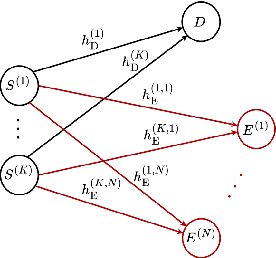
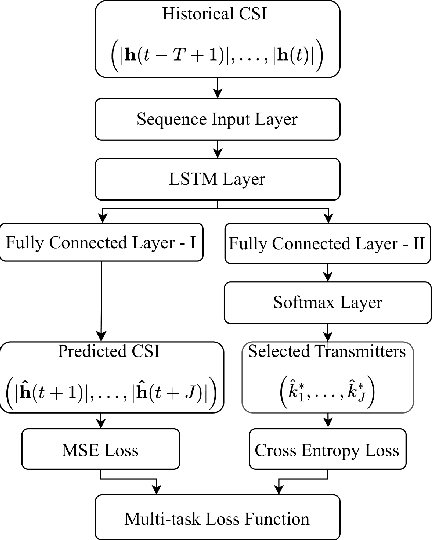
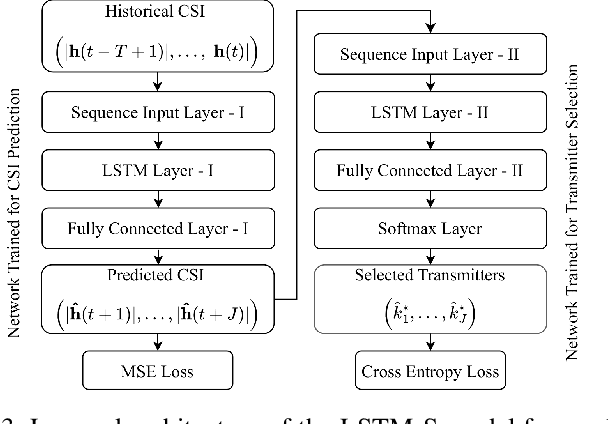
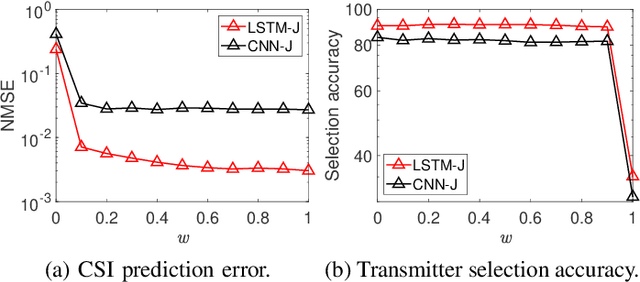
Abstract:In mobile communication scenarios, the acquired channel state information (CSI) rapidly becomes outdated due to fast-changing channels. Opportunistic transmitter selection based on current CSI for secrecy improvement may be outdated during actual transmission, negating the diversity benefit of transmitter selection. Motivated by this problem, we propose a joint CSI prediction and predictive selection of the optimal transmitter strategy based on historical CSI by exploiting the temporal correlation among CSIs. The proposed solution utilizes the multi-task learning (MTL) framework by employing a single Long Short-Term Memory (LSTM) network architecture that simultaneously learns two tasks of predicting the CSI and selecting the optimal transmitter in parallel instead of learning these tasks sequentially. The proposed LSTM architecture outperforms convolutional neural network (CNN) based architecture due to its superior ability to capture temporal features in the data. Compared to the sequential task learning models, the MTL architecture provides superior predicted secrecy performance for a large variation in the number of transmitters and the speed of mobile nodes. It also offers significant computational and memory efficiency, leading to a substantial saving in computational time by around 40 percent.
Opportunistic User Scheduling for Secure RIS-aided Wireless Communications
Mar 05, 2024Abstract:In this paper, we provide expressions for the secrecy outage probability (SOP) for suboptimal and optimal opportunistic scheduling schemes in a reconfigurable intelligent surface (RIS) aided system with multiple eavesdroppers in approximate closed form. A suboptimal scheduling (SS) scheme is analyzed, which is used when the channel state information (CSI) of the eavesdropping links is unavailable, and the optimal scheduling (OS) scheme is also analyzed, which is used when the global CSI is available. For each scheme, we provide a simplified expression for the SOP in the high signal-to-noise ratio (SNR) regime to demonstrate its behavior as a function of the key system parameters. At high SNR, the SOP saturates to a constant level which decreases exponentially with the number of RIS elements in the SS scheme and with the product of the number of RIS elements and the number of users in the OS scheme. We compare the performance of the opportunistic user scheduling schemes with that of a non-orthogonal multiple access (NOMA) based scheduling scheme which chooses a pair of users in each time slot for scheduling and we show that the opportunistic schemes outperform the NOMA-based scheme. We also derive a closed-form expression for the SOP of a decode-and-forward (DF) relay-aided scheduling scheme in order to compare it with that of the RIS-aided system. It is found that the RIS-aided system outperforms the relay-aided systems when the number of RIS elements is sufficiently large. An increased number of RIS elements is required to outperform the relay-aided system at higher operating frequencies.
Destination Scheduling for Secure Pinhole-Based Power-Line Communication
Jun 06, 2023



Abstract:We propose an optimal destination scheduling scheme to improve the physical layer security (PLS) of a power-line communication (PLC) based Internet-of-Things system in the presence of an eavesdropper. We consider a pinhole (PH) architecture for a multi-node PLC network to capture the keyhole effect in PLC. The transmitter-to-PH link is shared between the destinations and an eavesdropper which correlates all end-to-end links. The individual channel gains are assumed to follow independent log-normal statistics. Furthermore, the additive impulsive noise at each node is modeled by an independent Bernoulli-Gaussian process. Exact computable expressions for the average secrecy capacity (ASC) and the probability of intercept (POI) performance over many different networks are derived. Approximate closed-form expressions for the asymptotic ASC and POI are also provided. We find that the asymptotic ASC saturates to a constant level as transmit power increases. We observe that the PH has an adverse effect on the ASC. Although the shared link affects the ASC, it has no effect on the POI. We show that by artificially controlling the impulsive to background noise power ratio and its arrival rate at the receivers, the secrecy performance can be improved.
Secrecy of Opportunistic User Scheduling in RIS-Aided Systems: A Comparison with NOMA Scheduling
Jun 05, 2023Abstract:In this paper, we propose an opportunistic user scheduling scheme in a multi-user reconfigurable intelligent surface (RIS) aided wireless system to improve secrecy. We derive the secrecy outage probability (SOP) and its asymptotic expression in approximate closed form. The asymptotic analysis shows that the SOP does not depend on the transmitter-to-RIS distance and saturates to a fixed value depending on the ratio of the path loss of the RIS-to-destination and RIS-to-eavesdropper links and the number of users at high signal-to-noise ratio. It is shown that increasing the number of RIS elements leads to an exponential decrease in the SOP. We also compare our scheme with that of a non-orthogonal multiple access (NOMA) scheduling scheme, which chooses a pair of users to schedule in each time slot. The comparison shows that the SOP of all of the NOMA users is compromised, and that our proposed scheduling scheme has better performance.
Transmitter Selection for Secrecy Against Colluding Eavesdroppers with Backhaul Uncertainty
Jan 02, 2023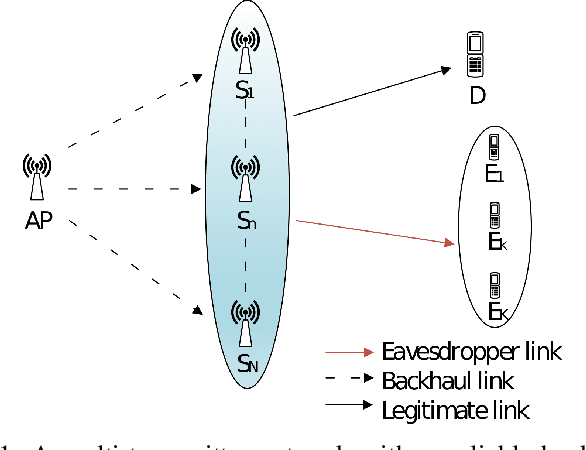



Abstract:In this paper, the secrecy performance of a multi-transmitter system with unreliable wireless backhaul links in the presence of multiple colluding eavesdroppers is considered. To improve the secrecy performance, two sub-optimal and optimal transmitter selection schemes are proposed. A generalized approach for the secrecy performance analysis is adopted to integrate the backhaul link reliability factor with the channel signal-to-noise ratio (SNR) through a mixture distribution depending on whether the backhaul reliability knowledge is unavailable or available. Non-zero secrecy rate (NZSR), secrecy outage probability (SOP), and ergodic secrecy rate (ESR) are evaluated for each selection schemes via a unified channel SNR ratio distribution based approach. Simplified asymptotic expressions are provided in each case to elucidate the infulence of the system parameters and of the backhaul reliability factor. We observe that the unreliable backhaul limits the secrecy performance of transmitter selection schemes by saturating the NZSR and SOP performance and by reducing the rate of change of the ESR with SNR. The performance improves when the knowledge of backhaul link activity is utilized, and the improvement is most noticeable when the backhaul is highly unreliable. We also observe that while the secrecy performance degrades with an increasing number of eavesdroppers, neither the asymptotic saturation value of the NZSR and SOP nor the rate of ESR improvement with SNR depends on the number of eavesdroppers.
Ergodic Secrecy Rate of Optimal Source-Destination Pair Selection in Frequency-Selective Fading
Aug 30, 2022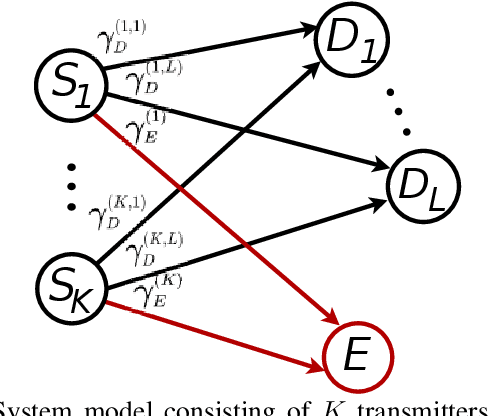
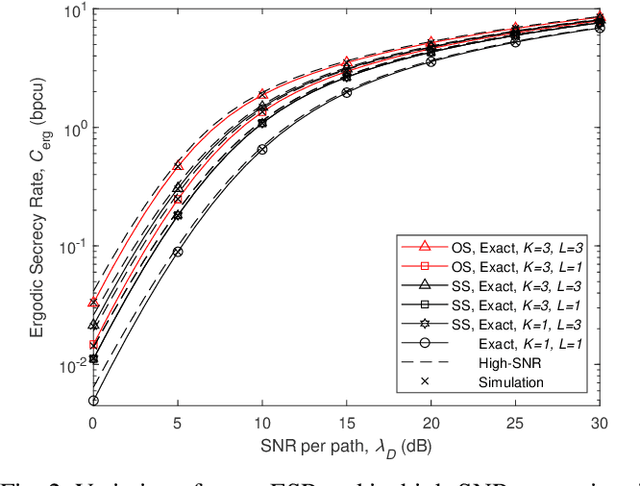
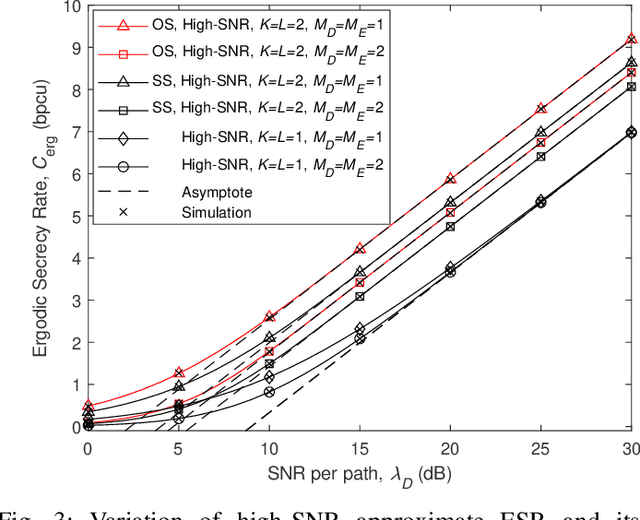
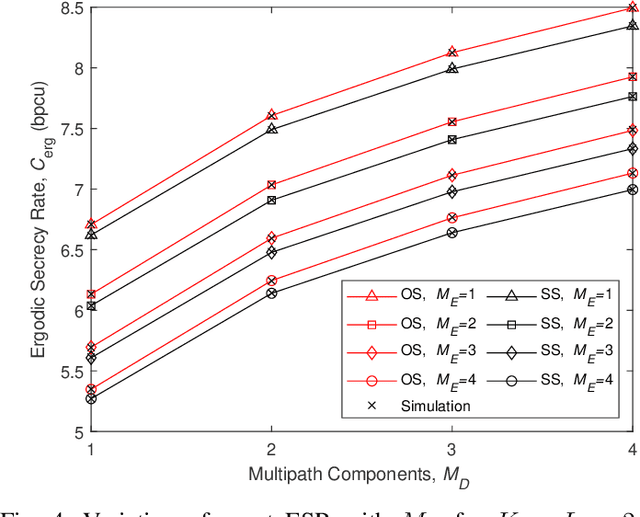
Abstract:Node selection is a simple technique to achieve diversity and thereby enhance the physical layer security in future wireless communication systems which require low complexity. High-speed data transmission often encounters frequency selective fading. In this context, we evaluate the exact closed-form expression for the ergodic secrecy rate (ESR) of the optimal source-destination pair selection scheme with single-carrier cyclic-prefix modulation, where the destination and eavesdropper channels both exhibit independent frequency selective fading with an arbitrary number of multipath components. A simplified analysis in the high-SNR scenario along with an asymptotic analysis is also provided. We also derive and compare the corresponding results for the sub-optimal source-destination pair selection scheme. We show that our analysis produces the corresponding ESR results under narrowband independent Nakagami-$m$ fading channel with any arbitrary integer parameter $m$. The effect of transmitters, destination and eavesdropping paths correlation on the ESR is also demonstrated. Our solution approach is general and can be used to find the ESR of a wider variety of transmitter selection schemes.
 Add to Chrome
Add to Chrome Add to Firefox
Add to Firefox Add to Edge
Add to Edge